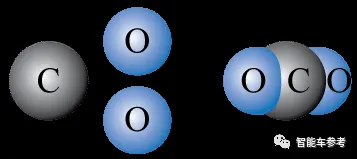
I. Favourable factors
(i) Inclusion of key new materials in the first batch of application demonstration guidance directory
On July 14, 2017, the State Ministry of Industry and Information Technology (MIIT) released the Guidance Catalog for the First Batch of Key New Materials for Application Demonstration. The Guidance Catalog involves four new materials in the field of new energy, including high-performance lithium battery diaphragms, lithium nickel manganese cobalt manganate ternary materials, anode materials, and high-purity crystalline lithium hexafluorophosphate materials.
(ii) Rapid industrial development and formation of industrial bases
Due to the abundant resources of lithium, cobalt, manganese, nickel and other metals required for the production of lithium battery cathode materials in China, and the rapid expansion of the market for consumer electronic products, new energy vehicles and other lithium batteries and their downstream applications, China's lithium battery cathode materials industry has been growing in recent years. The domestic lithium anode materials industry has a high degree of concentration, and has formed three major lithium anode materials industry bases in Beijing and Tianjin, the middle and lower reaches of the Yangtze River and South China.
(iii) Development of downstream industries leads to industrial growth
Driven by the rapid development of lithium battery and its downstream industry, lithium battery anode materials are growing rapidly. As a key component of electric vehicles, power lithium battery is one of the key components affecting vehicle performance, cost and user experience, and is also the largest component in the cost of the vehicle, with its cost accounting for half of the cost of the vehicle. In terms of breakdown, the cost of the four key materials, namely, positive electrode material, negative electrode material, diaphragm and electrolyte, accounts for more than 80% of the battery cost. Among them, the cost of cathode materials also occupies about 40% of the total cost of lithium-ion batteries.
(iv) Continuous technological innovation
The Key Laboratory of Advanced Battery Materials in Yunnan Province, built on the basis of Kunming University of Science and Technology, mainly focuses on lithium-ion batteries and key materials to carry out research, and has developed core technologies such as anode materials for lithium-ion ternary batteries, battery preparation and management. "Since the 13th Five-Year Plan, it has made new breakthroughs in the development of long-life high nickel cathode materials with core-shell structure, which has significantly improved the cycling stability of high nickel cathode materials.
Under the support of the National Key Research and Development Program, Prof. Dingguo Xia's team at Peking University carried out research on new high specific energy manganese-based cathode materials, breaking through the limitations of traditional modification methods such as doping, capping, and nano-morphology, and composite the LiMO2 phase with a monolayer of Li2MnO3 phase to prepare a manganese-based lithium-rich battery cathode material with an O2 configuration. This cathode material has a discharge specific capacity of more than 400mAh/g and a specific energy density of more than 1380Wh/kg, which provides a possibility for the development of a new type of lithium-ion batteries with a specific energy of more than 500Wh/kg, and it is the manganese-based lithium-rich cathode material for lithium-ion batteries with the highest specific energy density that has been reported at home and abroad. This study provides a new direction for the design of new high specific energy lithium-ion battery anode materials, and breaks through the limitations of the patent of foreign layered manganese-based lithium-rich materials (O3 configuration).
II. Disadvantages
(i) Excess of low-end products and insufficient high-end products
As China's anode material production capacity is mainly concentrated in low-end products, there is still a shortage of production capacity in some high-end products, such as high-performance ternary materials and other fields. Therefore, the lithium anode material industry as a whole is now in the stage of supply exceeding demand, and the main driving force in the future comes from the demand growth of power battery. And in terms of product distribution, there is excess capacity of low-end products and insufficient supply of high-end products.
(ii) There is a gap with advanced enterprises in Japan and South Korea.
The international anode material companies with certain production capacity and popularity are mainly concentrated in Japan, China and South Korea, and the scale of anode material enterprises in other countries in the world is generally small and the products are relatively single, so the above three countries are recognized as the three giant countries in the global anode material industry.
Japan and South Korea in the anode material industry development earlier, in recent years has been committed to ternary materials and other high-end anode material products, while the domestic side, due to a variety of reasons, lithium anode material industry in the past development center focused on lithium iron phosphate, in the past two years with the development of new energy automobile industry, the state and enterprises gradually pay attention to the development of ternary materials industry, but in terms of technology is still and Japan and South Korea's advanced enterprises have a certain gap. There is still a gap between the advanced enterprises in Japan and South Korea in terms of technology.
(iii) Substitution risk
The lithium battery cathode material industry is characterized by fast product replacement and increasing performance requirements. In addition, alternative technologies such as fuel cells, lithium-sulfur batteries, lithium-air batteries, although the distance from the large-scale industrialization of time, but does not rule out the risk of future technological innovation to replace existing products.
(Source of article: Changjiang Nonferrous Metals Network)
[Zhongshun New Energy Marketing Department March 2, 2019 Responsibility: Xiao Xu]
* Reproduced for the purpose of transmitting more information, and does not mean that we endorse its views and are responsible for its authenticity.




